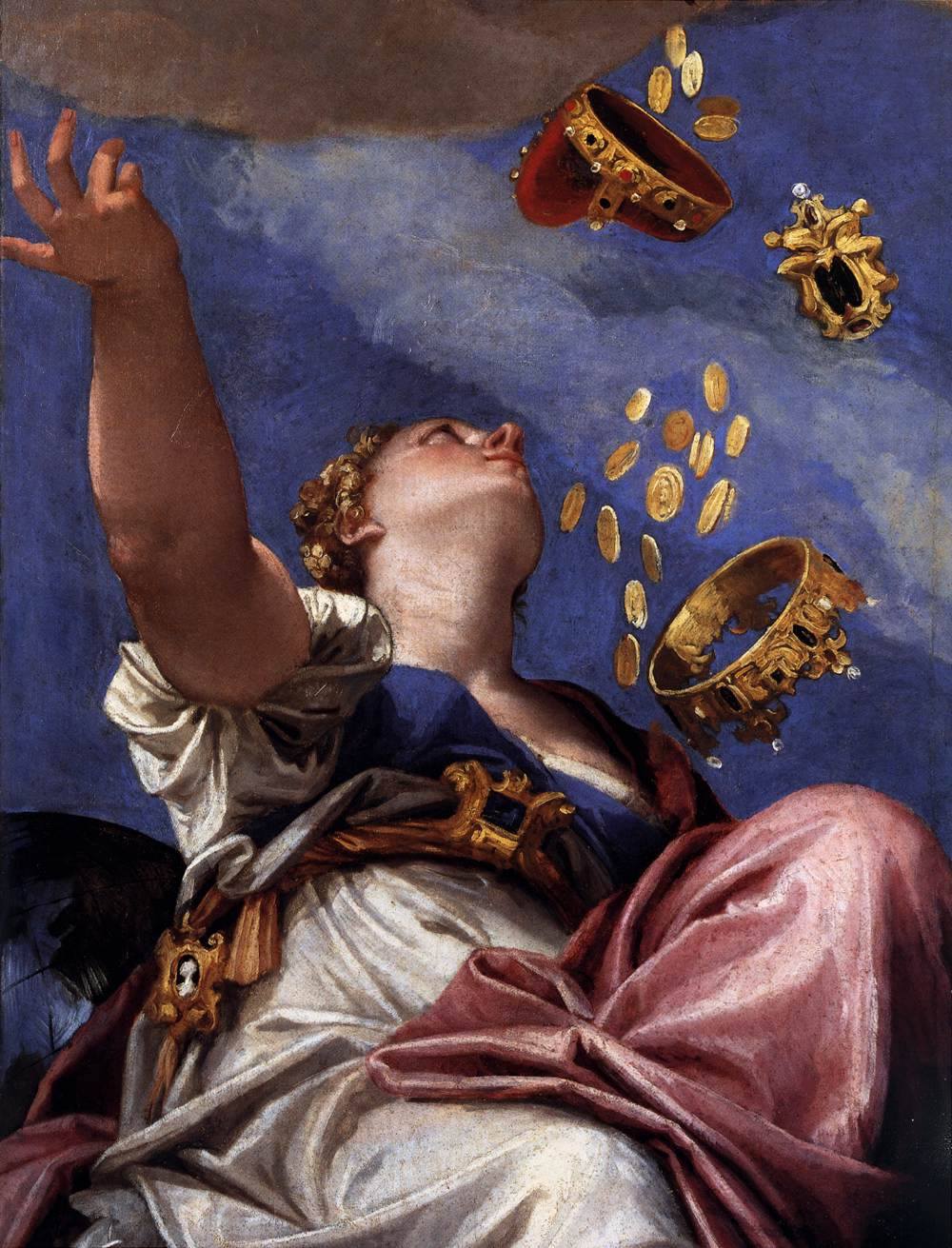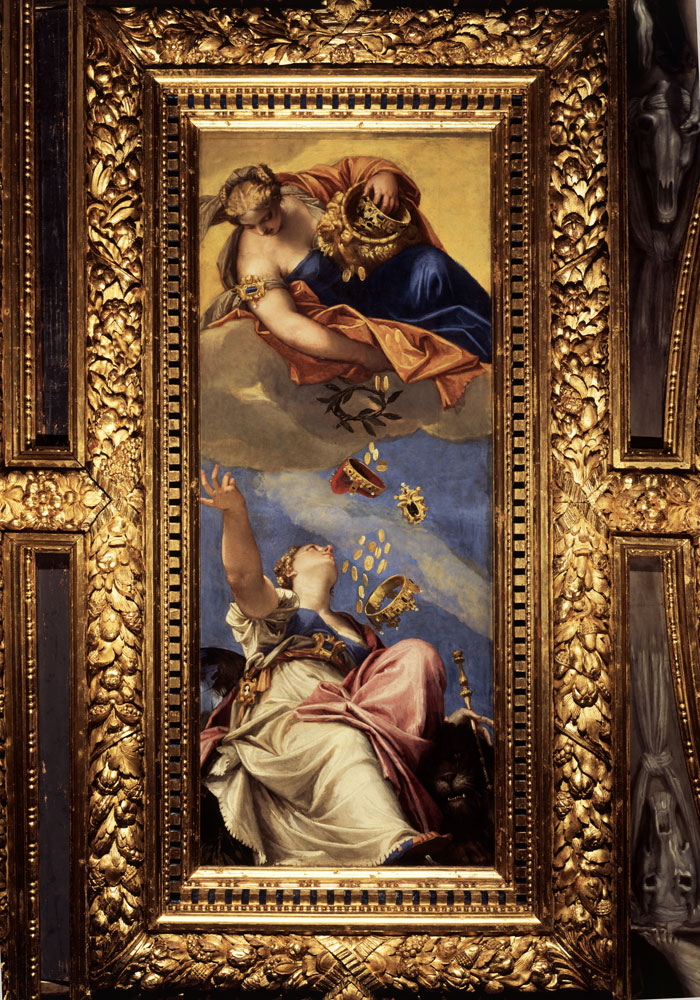
The painting entitled Giunone versa doni su Venezia (Juno Pouring Gifts on Venice) by Paolo Veronese is the result of a commission from the Venetian Republic, who wanted the state rooms of the Doge’s Palace in Venice to celebrate the power and greatness of Venice.
In reality, the commission was given to Giambattista Ponchino, a painter from Castelfranco Veneto, who chose to be assisted by two collaborators: Paolo Veronese and Giovanni Battista Zelotti.
Paolo Veronese worked for three years and one of his most beautiful works is Giunone versa doni su Venezia.
The Beauty of Juno Pours Gifts on Venice by Paolo Veronese

Paolo Veronese’s painting entitled Giunione versa doni su Venezia is located in the Sala delle Udienze in the Doge’s Palace in Venice.
It was probably painted between 1553 and 1556 and is one of Paolo Veronese’s most beautiful works.
The vibrant use of colour, accentuated luminosity and a fresh perspective are the main features of this canvas that are impossible not to notice and love.
DESCRIPTION OF JUNO POURS GIFTS ON VENICE
Paolo Veronese painted a canvas in which Juno casts gifts on Venice from above, who is described as a young woman, beautiful and richly dressed.
The lion, symbol of the city, stands at the feet of Venice, while the insignia of the city’s power and wealth are painted and highlighted: the doge’s horn, crown, laurel, jewels and gold coins.
Other artists, at the same time as Paolo Veronese painted this canvas, were busy creating works for the same room in the Doge’s Palace, but none achieved his skill and ability.
This is also why Paolo Veronese became one of the most important representatives of Venetian Renaissance painting, despite his free temperament. His most controversial work was the Supper in the Levi House, now exhibited in the Gallerie dell’Accademia in Venice.
The description of Venice through the allegorical image of a noble and majestic woman seated on a throne is nothing new. Paolo Veronese took up a subject that was common in Venetian art of the time and served to emphasise the prestige and magnificence of the Venetian Republic.
SOME CURIOSITIES ABOUT JUNO POURS GIFTS ON VENICE
The canvas was removed from the ceiling of the Doge’s Palace in 1797 by Napoleon’s troops. The work was transferred to Brussels and only returned to its place in 1820.
To see it, you need to buy tickets for the Doge’s Palace in Venice, which gives you the chance to visit the city’s most important palace, but also to cross the famous Bridge of Sighs and admire other great masterpieces such as Tiepolo’s Neptune Offers Gifts to Venice.
Paolo Veronese, driven by the need to make the painting, which was set within a rich wooden frame, more visible, achieved a fabulous work characterised by a luminous use of colour. This would become a constant in his production in later years.
Paolo Veronese’s life was studded with successes, great masterpieces, provocations and some lawsuits brought by his patrons. However, Veronese’s workshop in Venice was an important point of reference for the intellectuals of the time. These included the poet Torquato Tasso, who called Paolo Veronese ‘the Titian of our time’.

